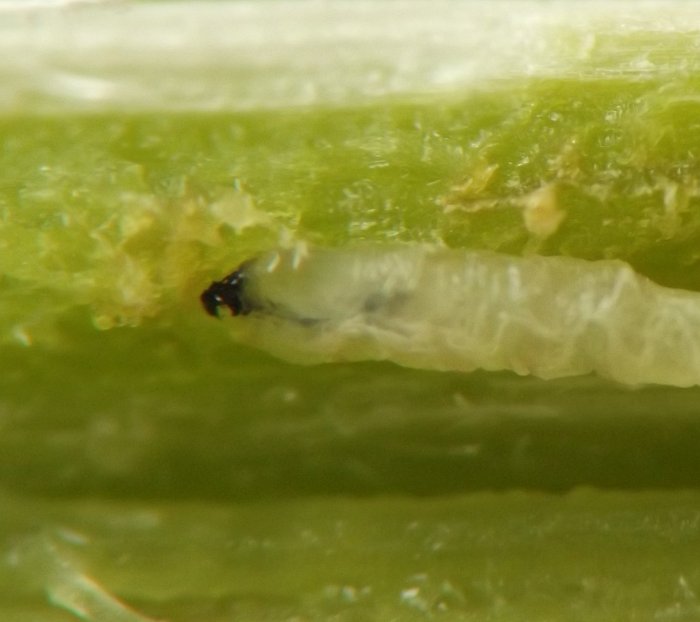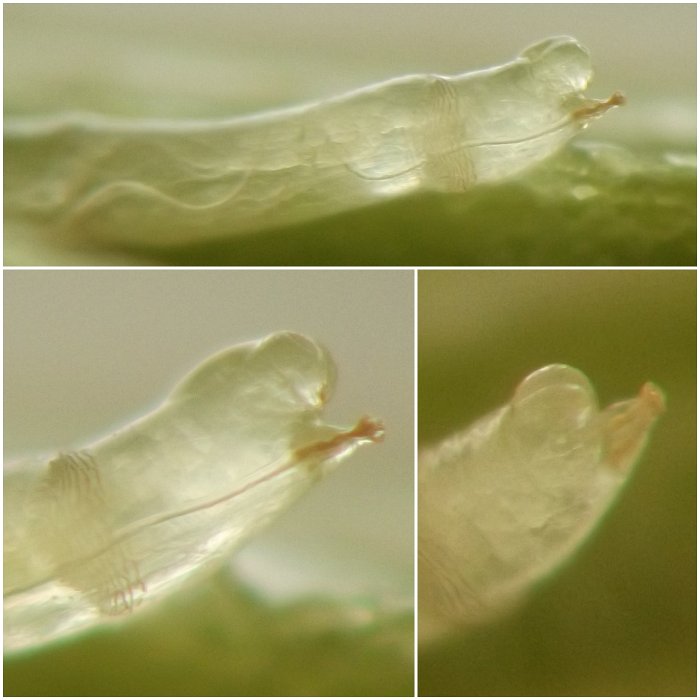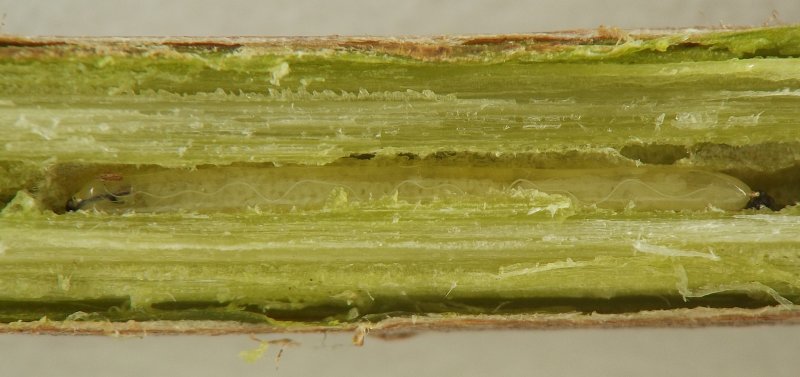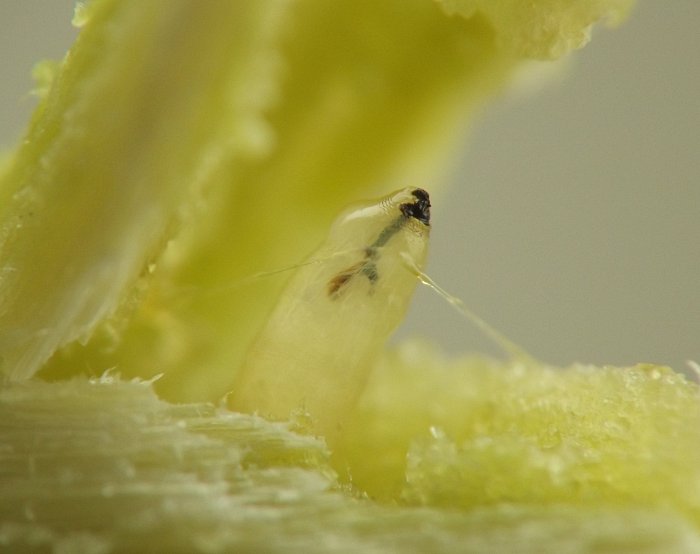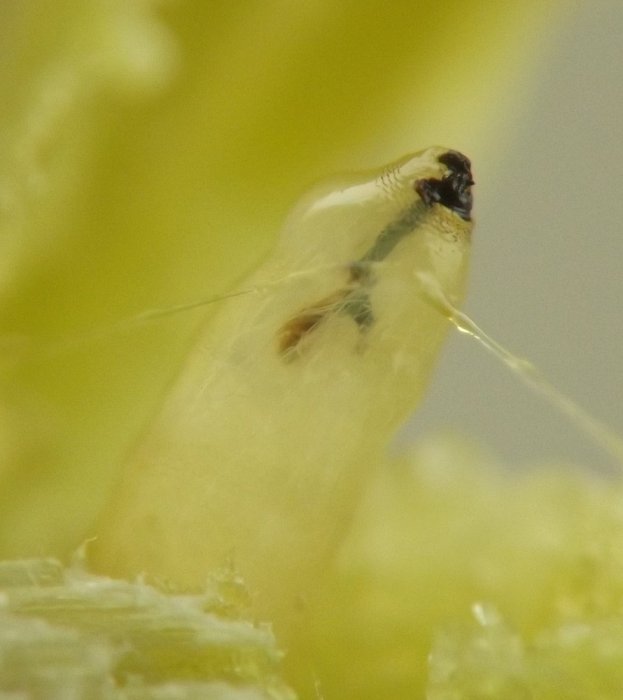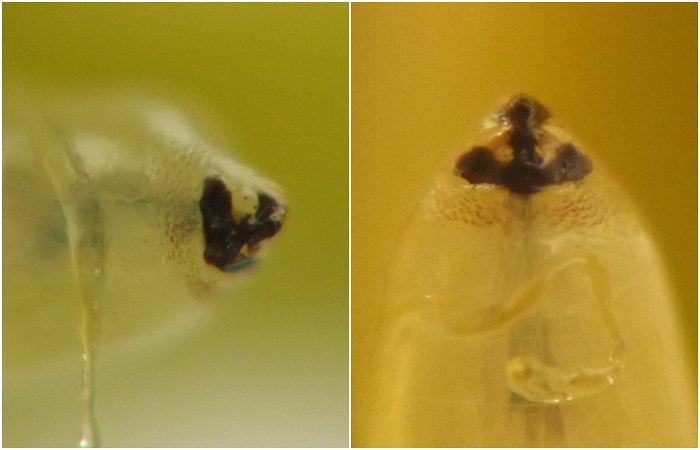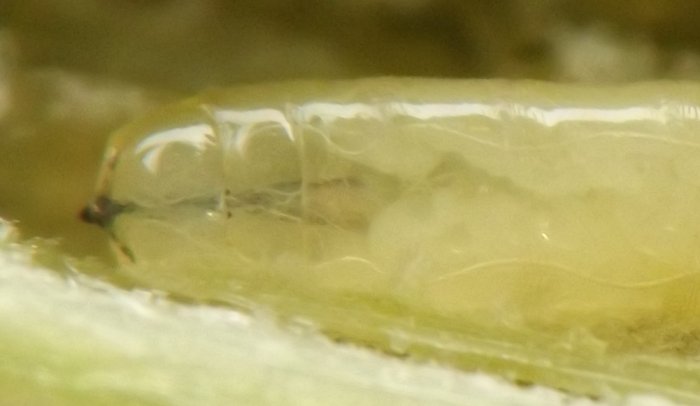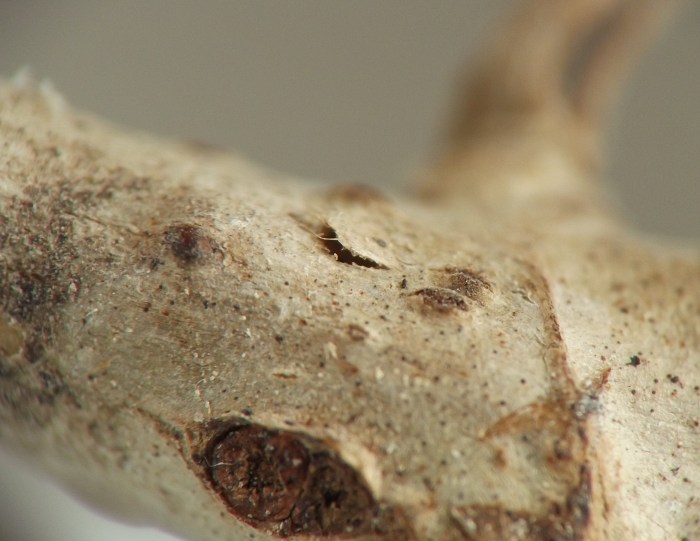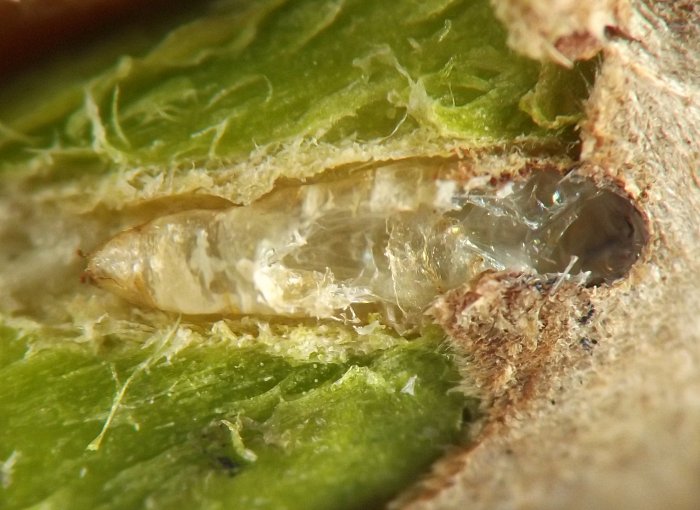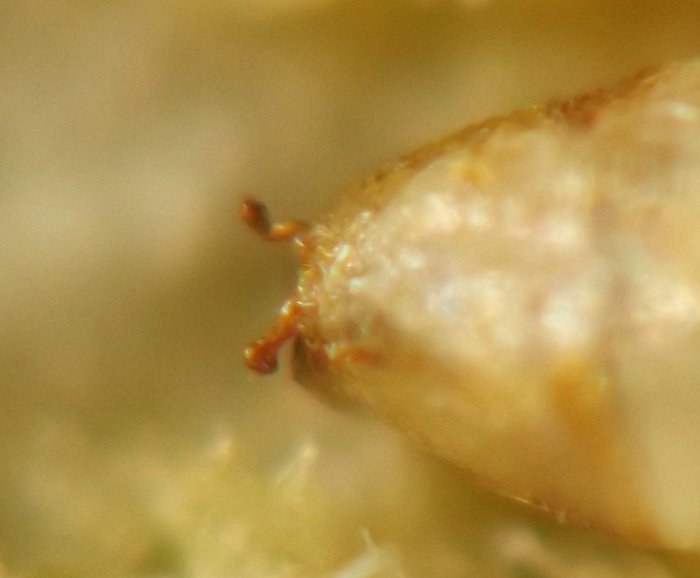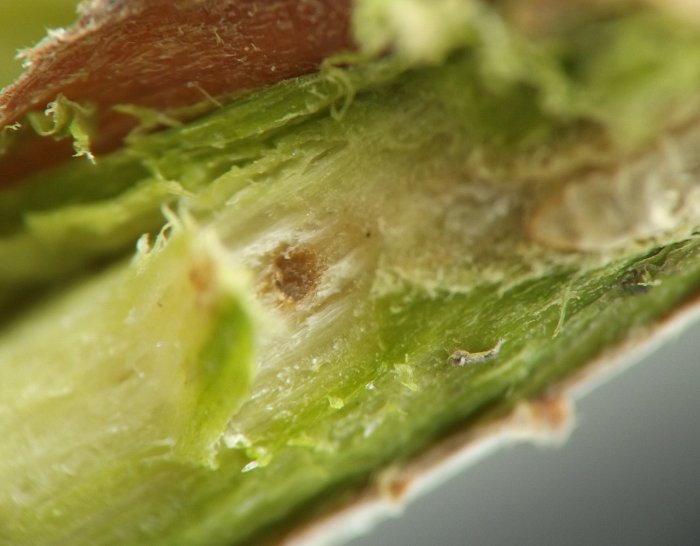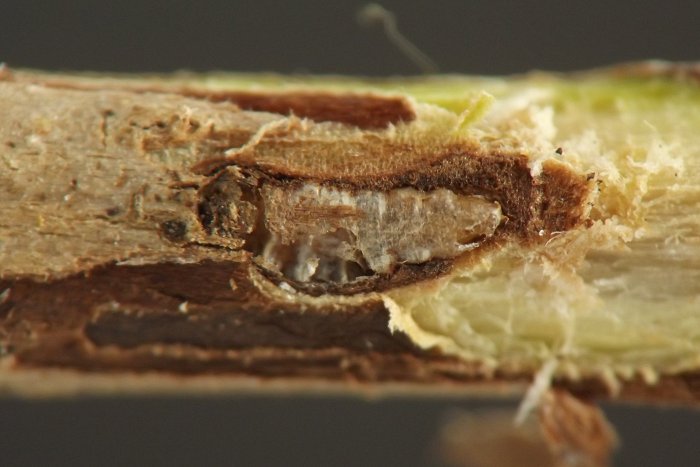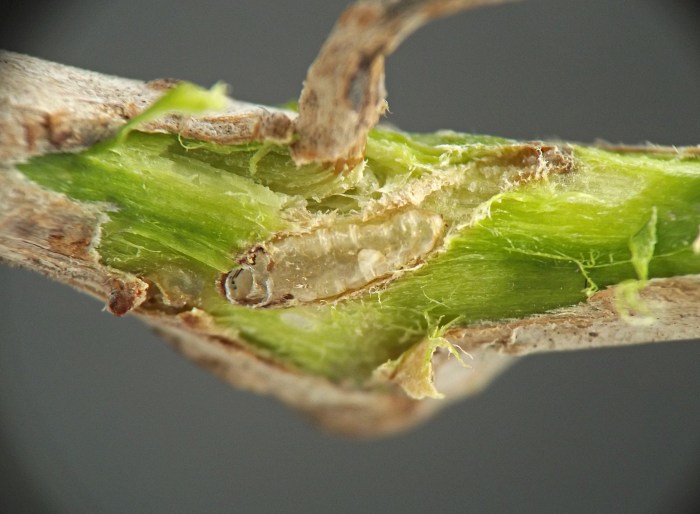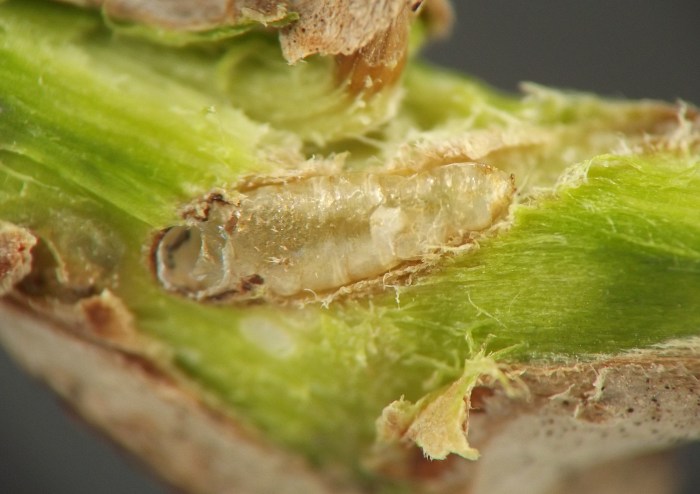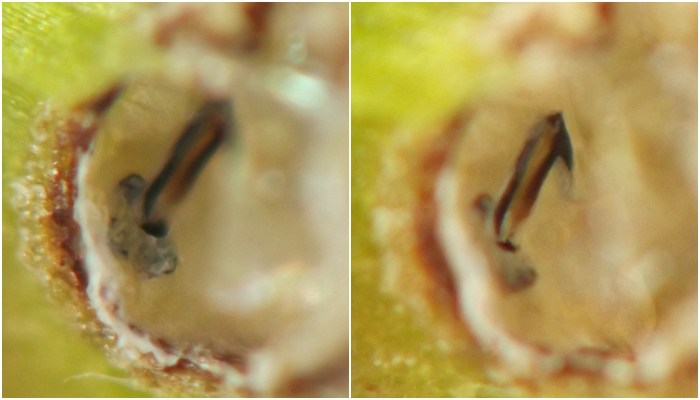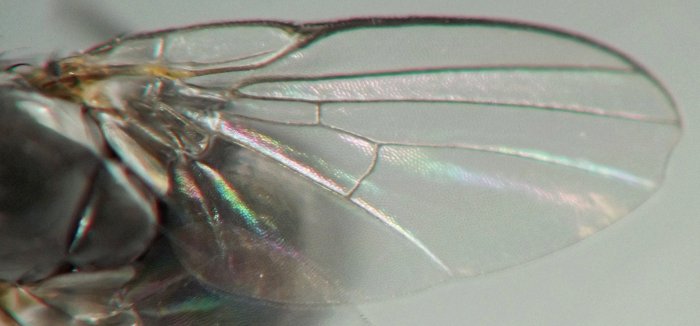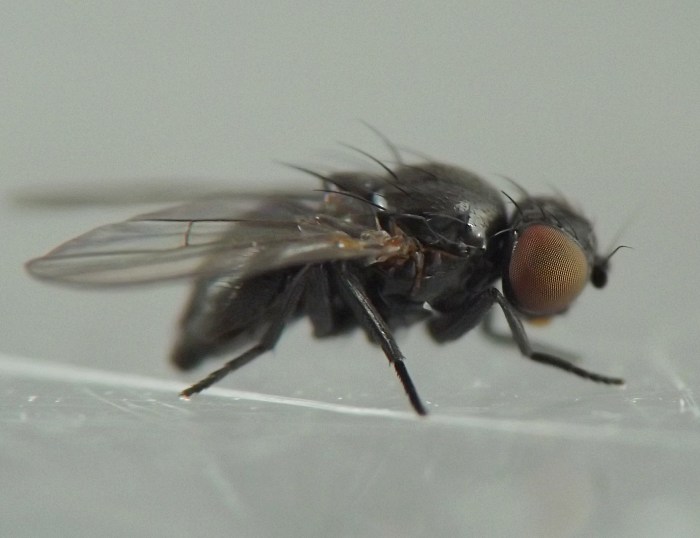Stem borer (Diptera: Agromyzidae) in Parthenocissus [0359]
| Order | Diptera |
|---|---|
| Family | Agromyzidae[T,L,P,A] |
| Lower taxon | undetermined |
| No. spp. involved | One confirmed |
| Feeding mode | Stem borer |
| Host plant | Parthenocissus sp. (Vitaceae) |

Larvae of this borer may initially be found tunneling in core tissues of young stems in summer. They are exceptionally long and thin. Their feeding creates irregular hollowing and disturbance to the stem interior, with at least some affected areas in the interior apparently forming callus tissue in response, as has been reported for tree tissues affected by Phytobia cambii in Europe (Ellis 2023). Dark greenish or blackish spots of frass are periodically distributed through the larval tunnels. At least some older larvae overwinter in the young woody stems; a few such overwintering larvae were located and photographed as part of the current study (see images below). Mature larvae migrate from deep in the stem interior to shallower tissues in order to pupate, creating an abbreviated (~10 mm) tunnel just under the bark, at the end of which the puparium is formed.
When the adult emerges, the anterior end of the puparium splits and, because this part of the puparium makes contact with the underside of the bark of the stem, a semicircular hole or exit slit in the bark (presumably cut by the larva prior to pupation) opens up simultaneously, through which the adult escapes. This is in contrast to most internally-pupating stem borer agromyzids the author has observed, for which there is usually a short but noticeable exit tunnel in the stem between the anterior end of the puparium and the operculum in the stem epidermis. The situation with no exit tunnel and in which the outermost layer of stem tissue opens up simultaneously with the anterior end of the puparium is more similar to what occurs with Ophiomyia spp. agromyzid stem miners who pupate just under the epidermis of herbaceous stems. However, unlike such stem miners, this Parthenocissus borer agromyzid either does not project its anterior spiracles through the outermost layers of stem tissue, or the anterior spiracles are subtle enough when so projected that the author did not notice them. The former scenario is favored given that the anterior spiracles of the larva seem to be somewhat reduced / recessed and not clearly stalked (see, e.g., image 0359-10 below).
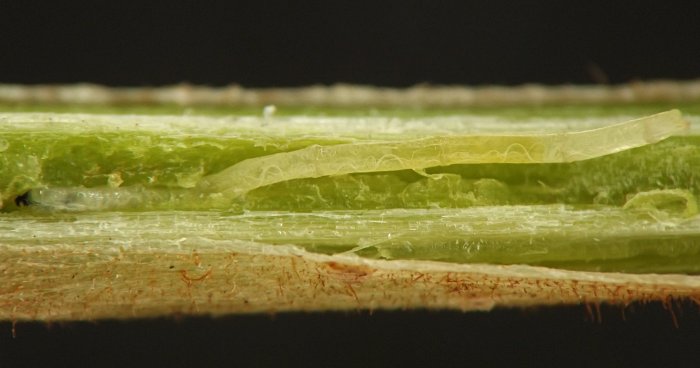
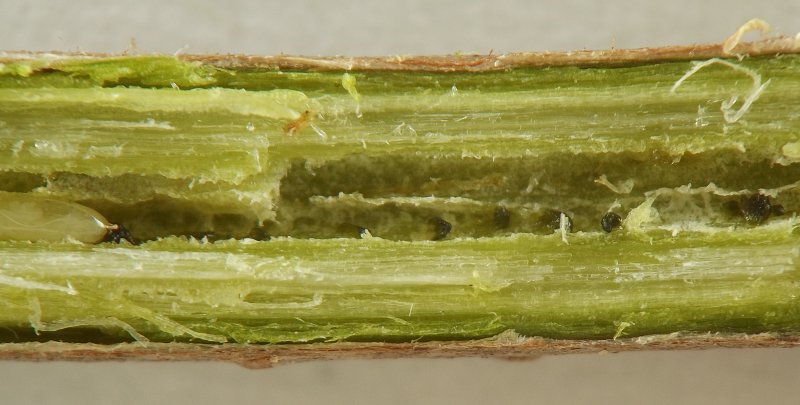
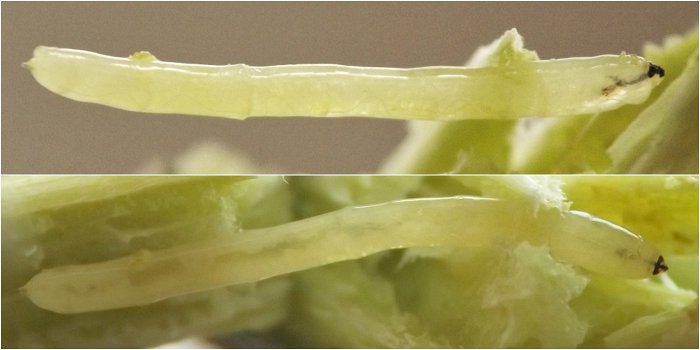
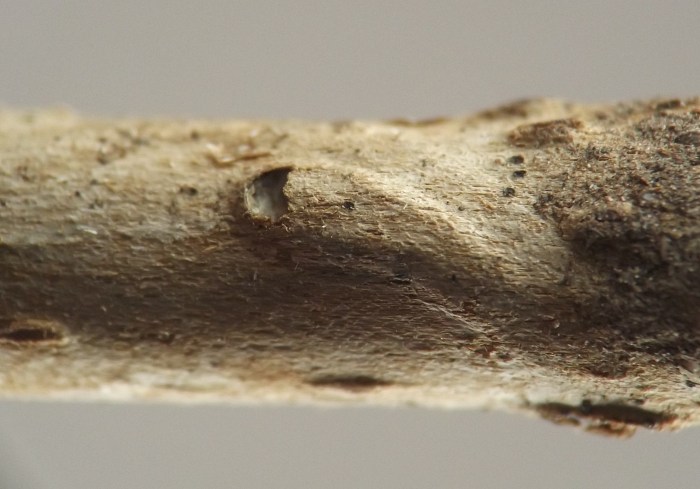

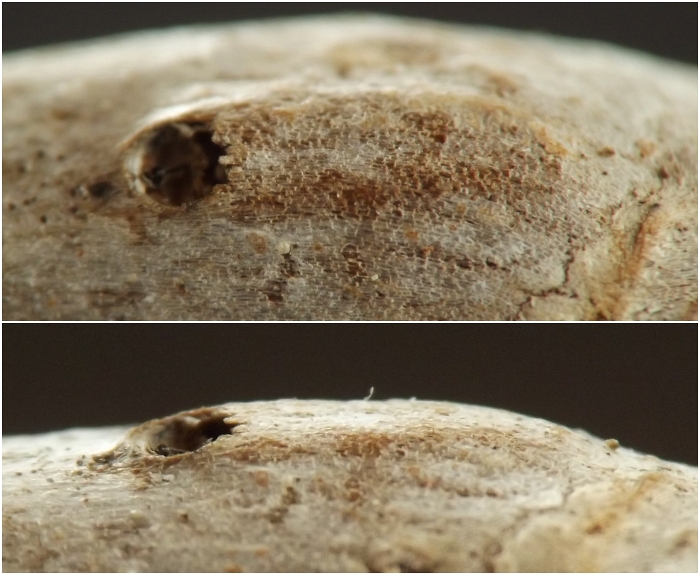


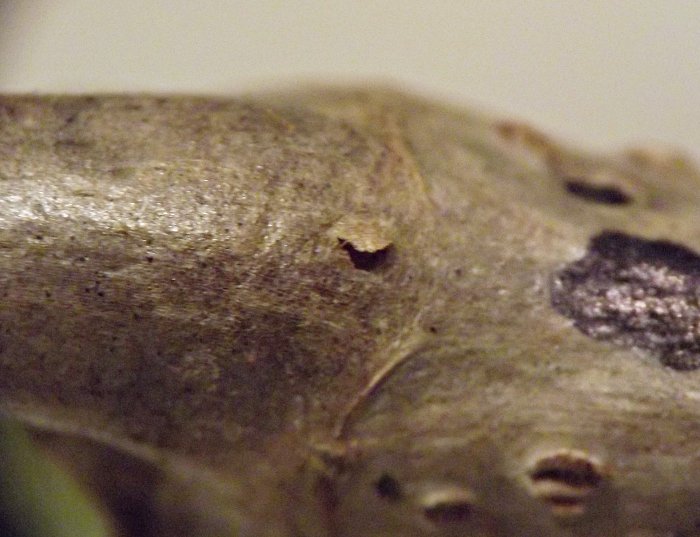
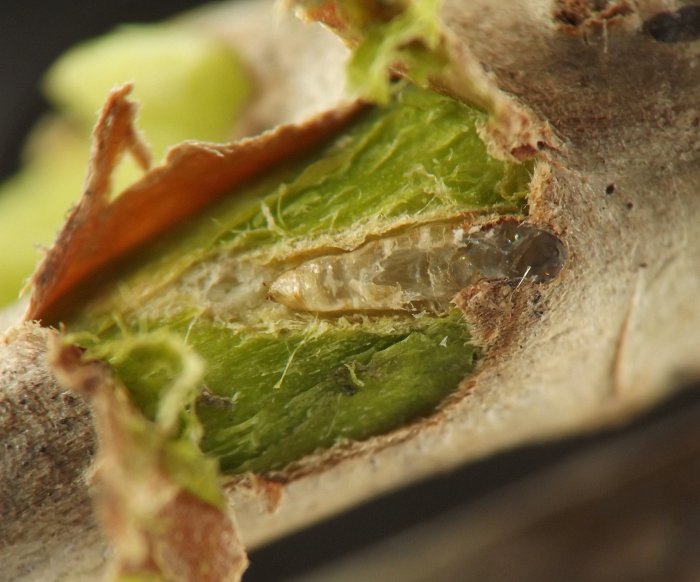

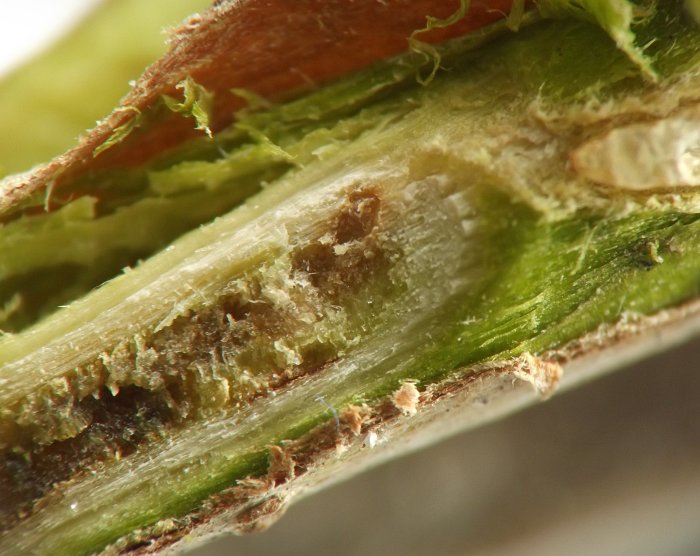
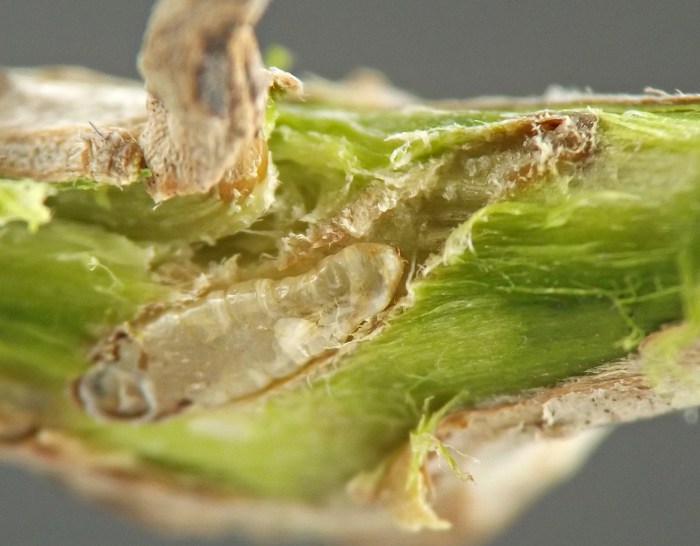
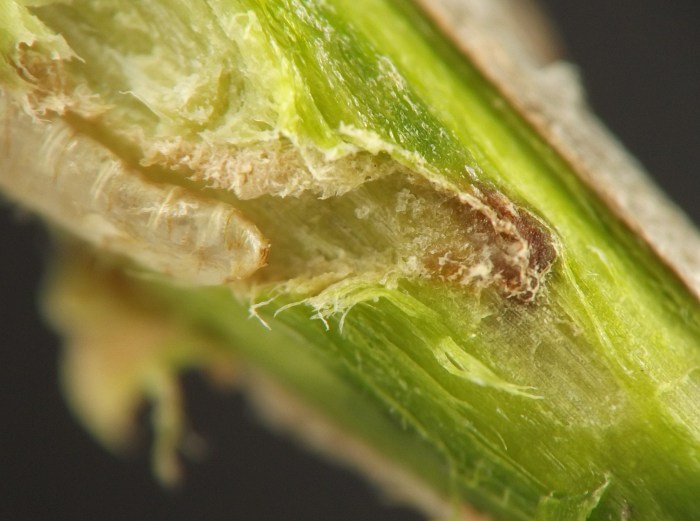
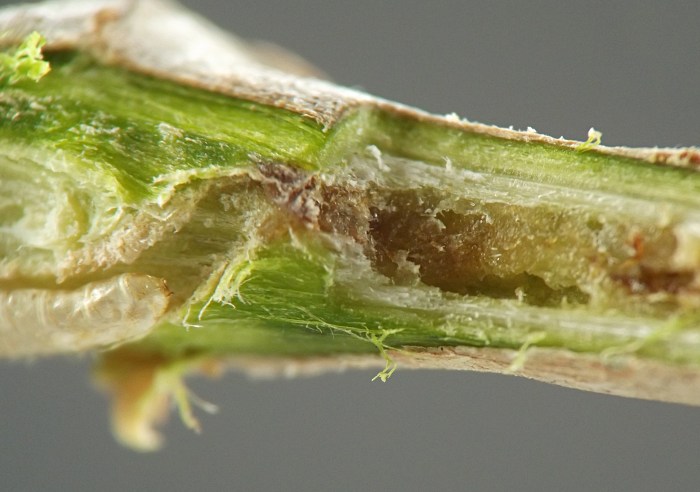
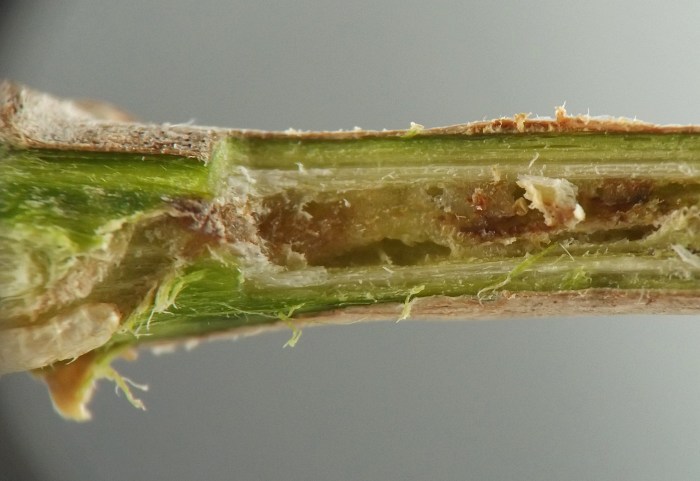
Specimen data for images
Coll. 08/19/18, photos same day (young larva, 01-04); coll. 02/20/18, photos same day (older larva stretched out straight in stem tunnel, 05-06); coll. 02/17/18, photos same day (older larva in stem, 07-12); coll. 04/09/22, photos same day (already-spent stem bump and a partial already-spent puparium under bark, 13-15); coll. 04/09/22 as intact puparium, adult em. 05/04/22, photos 05/04/22-05/05/22 (adult and puparium from which she emerged, 16-27); coll. 05/11/22, photo on 05/12/22 (already-spent stem bump, 28); coll. 05/11/22 as intact puparium, adult em. 05/21/22, photos 05/21/22 (puparium from which adult emerged in captivity, 29-39); coll. 02/01/18, photo taken on 02/02/18 (already-spent stem bump, 40).
References
Ellis, W.N. 2023. Phytobia cambii. In Plant Parasites of Europe [website]. Retrieved October 2, 2023 from here.
Page created 10/02/23. Last update: 11/17/24

